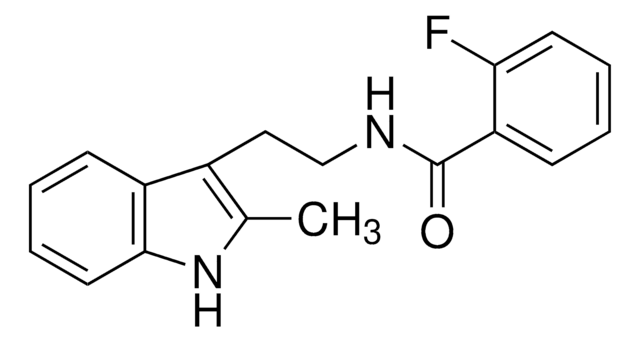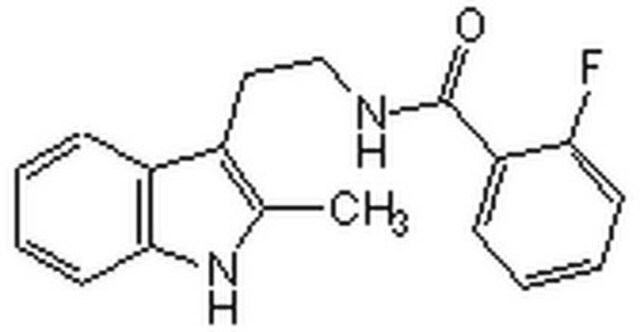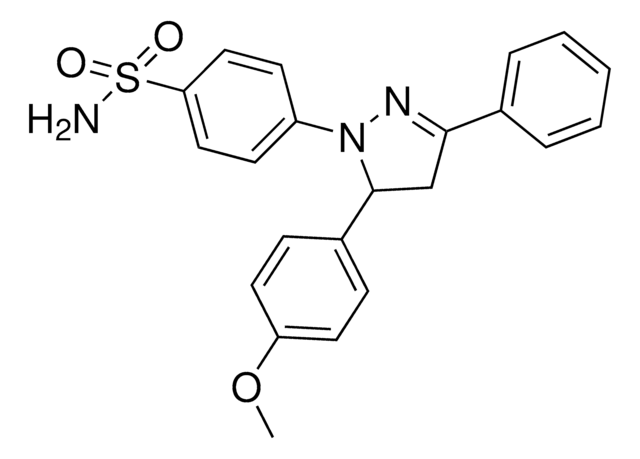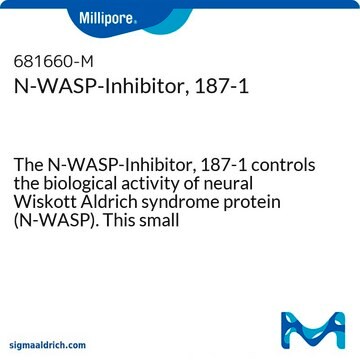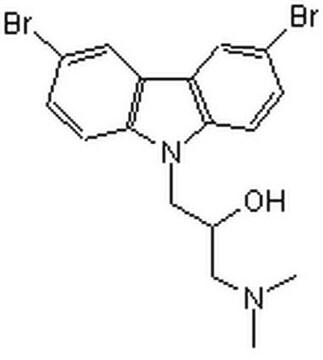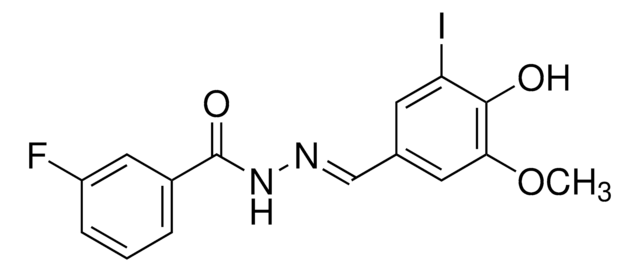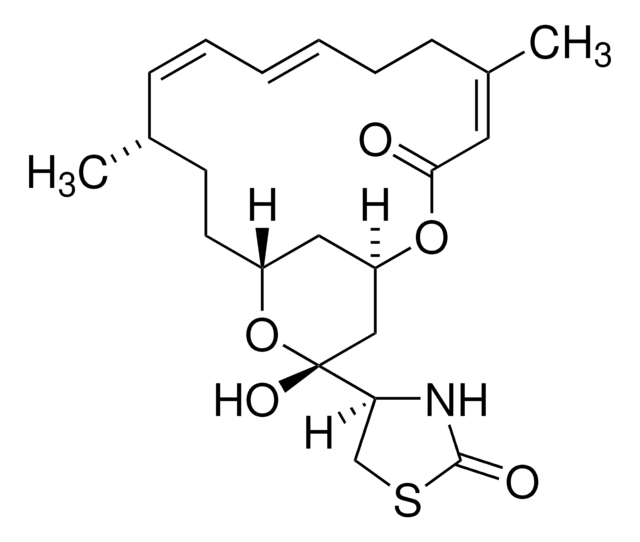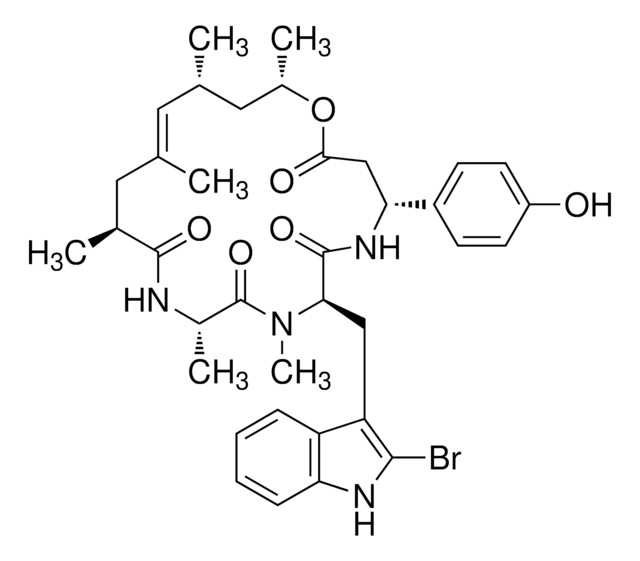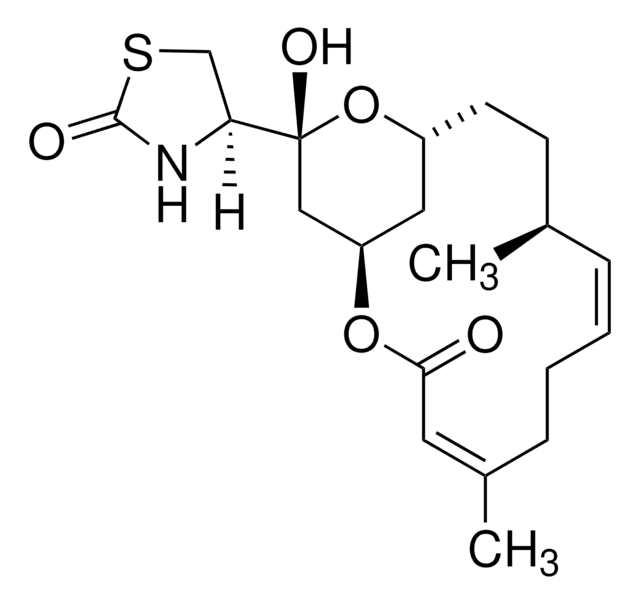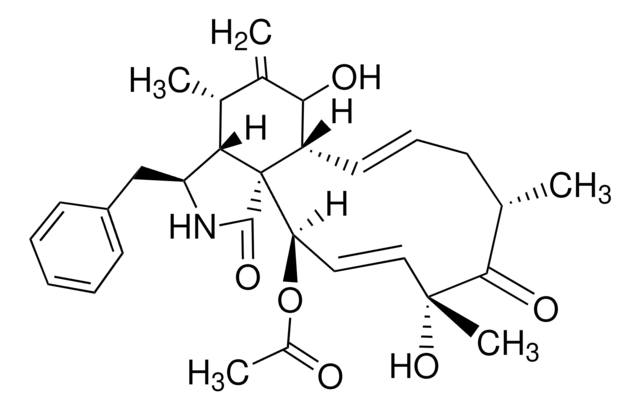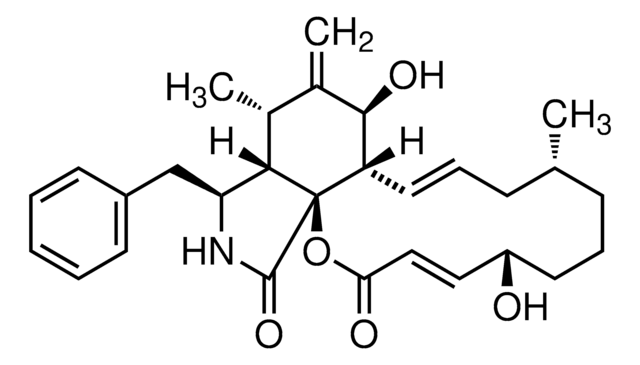W2270
Wiskostatin
Synonyme(s) :
1-(3,6-dibromocarbazol-9-yl)-3-(dimethylamino)propan-2-ol
About This Item
Produits recommandés
Essai
≥98% (HPLC)
Niveau de qualité
Forme
powder
Couleur
white to beige
Solubilité
DMSO: 10 mg/mL, clear
Température de stockage
2-8°C
Chaîne SMILES
CN(C)CC(O)Cn1c2ccc(Br)cc2c3cc(Br)ccc13
InChI
1S/C17H18Br2N2O/c1-20(2)9-13(22)10-21-16-5-3-11(18)7-14(16)15-8-12(19)4-6-17(15)21/h3-8,13,22H,9-10H2,1-2H3
Clé InChI
XUBJEDZHBUPBKL-UHFFFAOYSA-N
Description générale
Application
- as a small-molecule inhibitor of Wiskott-Aldrich syndrome protein (WASP) in human osteosarcoma U2OS cells and mouse-tail fibroblast cell lines
- as a neural (N)-WASP inhibitor in cultured neurons and in the human embryonic kidney (HEK293) cells expressing HA-Parkin
- as a neural (N)-WASP inhibitor in dorsal root ganglion (DRG) cells to investigate vascular endothelial growth factor (VEGF) effect on the actin related protein 2/3 complex (Arp 2/3)
Actions biochimiques/physiologiques
Mention d'avertissement
Danger
Mentions de danger
Conseils de prudence
Classification des risques
Acute Tox. 3 Oral - Aquatic Chronic 4
Code de la classe de stockage
6.1C - Combustible acute toxic Cat.3 / toxic compounds or compounds which causing chronic effects
Classe de danger pour l'eau (WGK)
WGK 3
Faites votre choix parmi les versions les plus récentes :
Certificats d'analyse (COA)
Vous ne trouvez pas la bonne version ?
Si vous avez besoin d'une version particulière, vous pouvez rechercher un certificat spécifique par le numéro de lot.
Déjà en possession de ce produit ?
Retrouvez la documentation relative aux produits que vous avez récemment achetés dans la Bibliothèque de documents.
Les clients ont également consulté
Notre équipe de scientifiques dispose d'une expérience dans tous les secteurs de la recherche, notamment en sciences de la vie, science des matériaux, synthèse chimique, chromatographie, analyse et dans de nombreux autres domaines..
Contacter notre Service technique